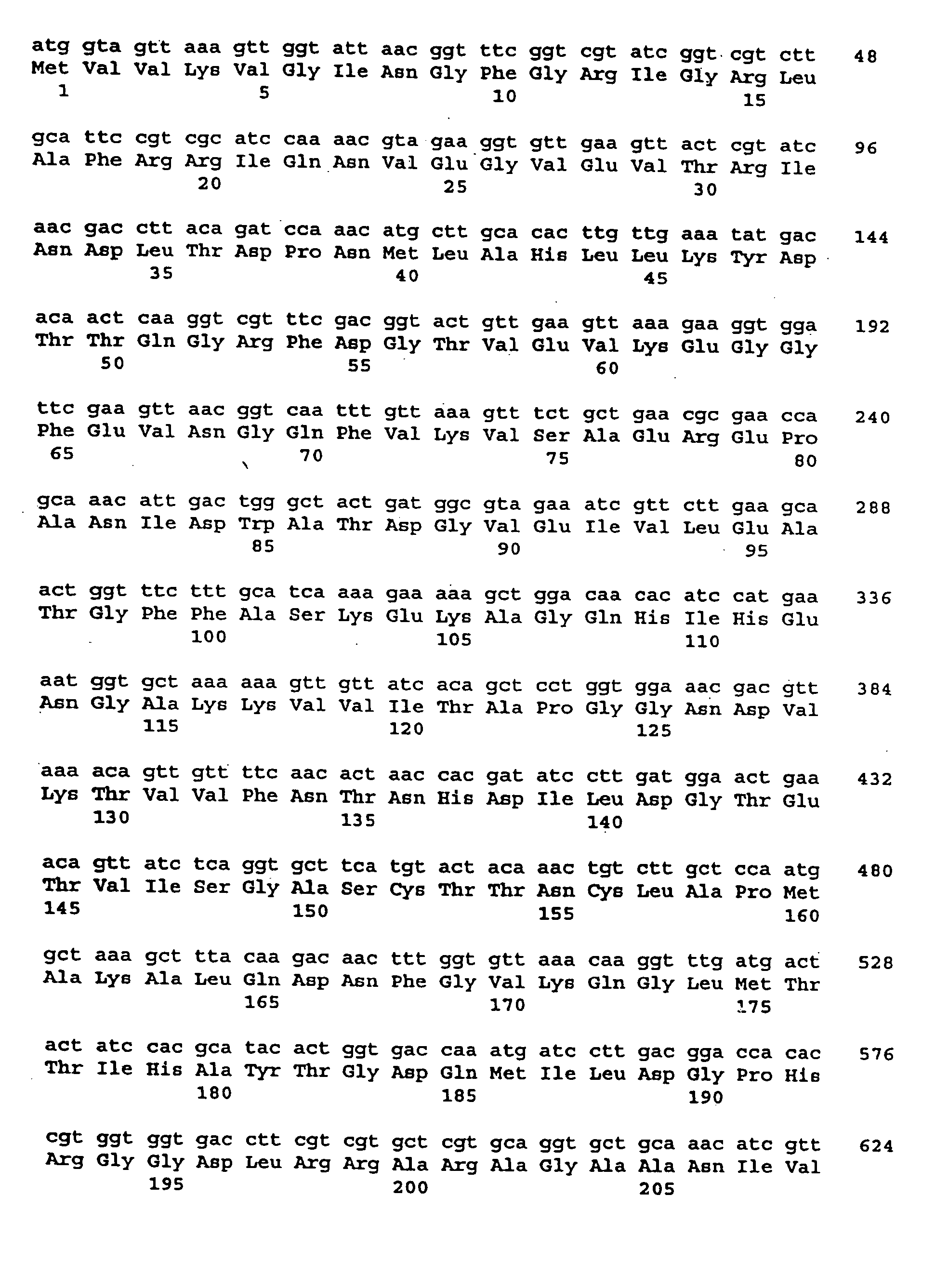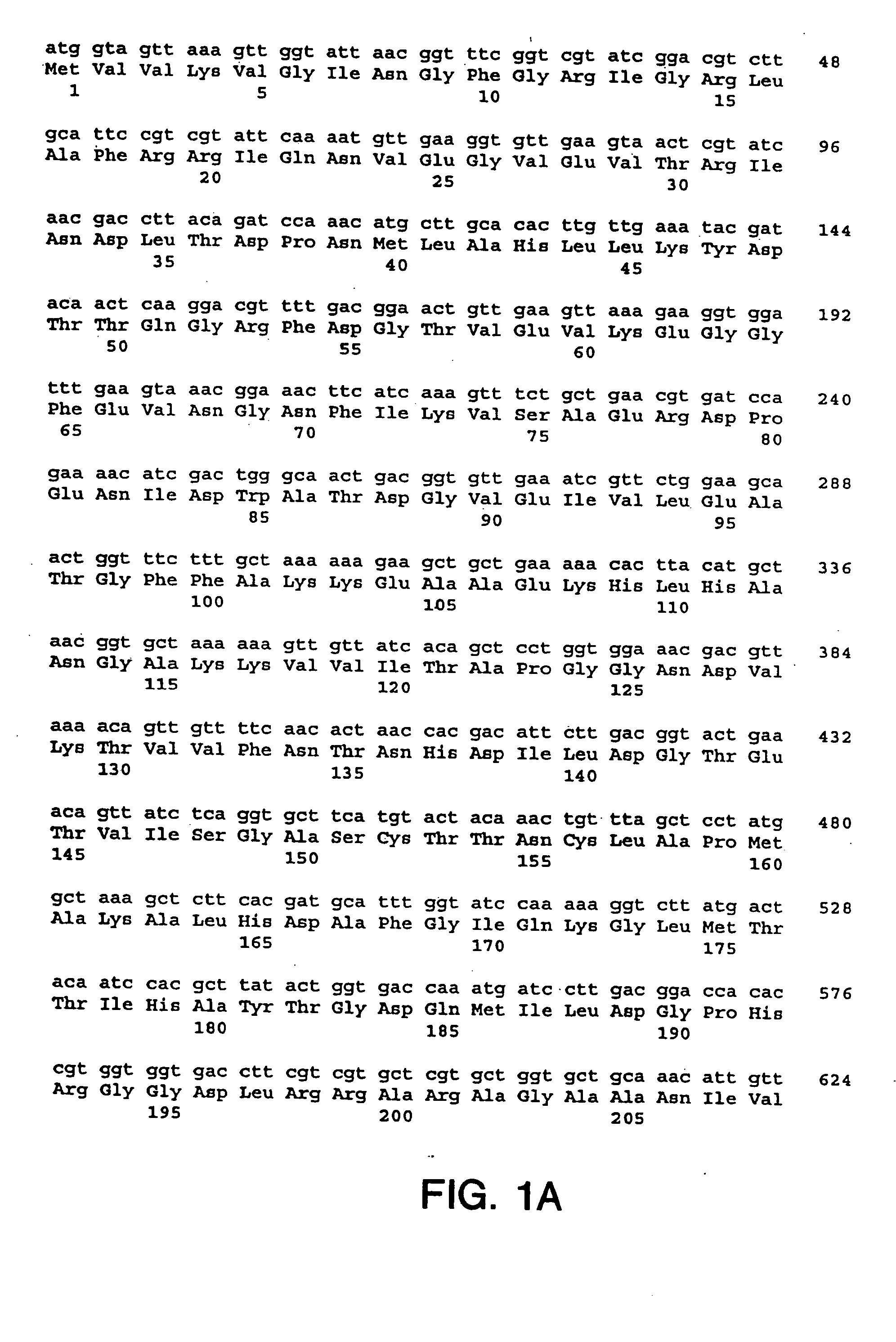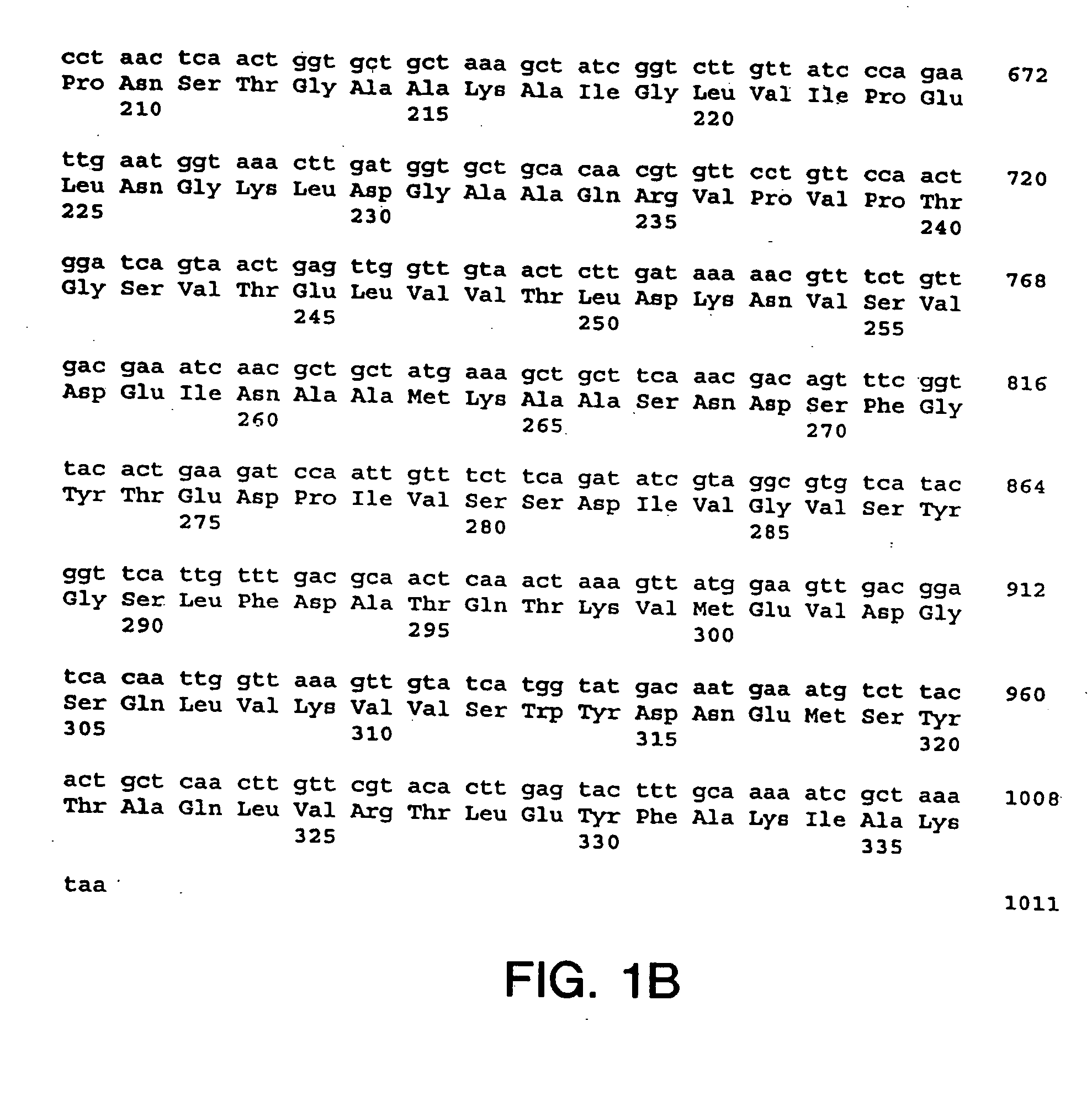Immunization of dairy cattle with GapC protein against Streptococcus infection
a technology of dairy cattle and gapc protein, which is applied in the field of bacteria antigens and genes, can solve the problems of reducing milk yield as well as quality, affecting the quality of milk, so as to achieve efficient clearance of the invading organism
- Summary
- Abstract
- Description
- Claims
- Application Information
AI Technical Summary
Benefits of technology
Problems solved by technology
Method used
Image
Examples
example 1
Preparation, Amplification, Sequencing, Expression, Purification and Characterization of the S. dysgalactiae GapC Plasmin Binding Protein
A. Preparation of S. dysgalactiae Chromosomal DNA
[0200] A clinical S. dysgalactiae isolate from a case of bovine mastitis (ATCC Accession No. ATCC43078) was obtained from the American Type Culture Collection (10801 University Boulevard, Manassas, Va. 20110-2209), and was used as a source of DNA. The organism was routinely grown on TSA sheep blood agar plates (PML Microbiologicals, Mississauga, Ontario) at 37° C. for 18 hours, or in Todd-Hewitt broth (Oxoid Ltd., Hampshire, England) supplemented with 0.3% yeast extract (THB-YE) at 37° C., 5% CO2.
[0201] Chromosomal DNA was prepared from S. dysgalactiae grown in 100 ml of THB-YE supplemented with 20 mM glycine for approximately 6 hours, until an A600 of 0.8 to 1.0 was reached. Cells were harvested and re-suspended in 50 mM EDTA, 50 mM Tris-HCl, 0.5% Tween-20® (Sigma, St. Louis, Mo.) and supplement...
example 2
Immunization with S. dysgalactiae GapC and experimental infection of cattle
[0236] Vaccines were formulated in such a fashion that they contained 50 mg / ml of affinity purified recombinant GapC in the oil-based adjuvant VSA3 (VIDO, Saskatoon, Saskatchewan, Canada; van Drunen Littel-van den Hurk et al. (1993) Vaccine 11:25-35). VSA3 is a combination of Emulsigen Plus™ (MVP Laboratories, Ralston, Nebr.) and Dimethyldioctadecyl ammonium bromide (Kodak, Rochester, N.Y.). The affinity-purified recombinant GapC protein used for the vaccine preparation is shown in FIG. 18.
[0237] Twenty-four non-lactating Holsteins with no history of S. dysgalactiae infection were obtained from various farms in Saskatchewan, Canada. One week prior to vaccination, all animals were treated with Cepha-dry™ (Ayerst Laboratories, Montreal, Canada) (300 mg per quarter), in order to clear any infection of the udders prior to the vaccination step.
[0238] Groups of 8 animals were immunized subcutaneously with two do...
example 3
Determination of GapC-specific Antibodies
[0240] GapC-specific antibodies in bovine serum were measured using an enzyme-linked immunosorbent assay (ELISA). Briefly, microtiter plates (NUNC, Naperville, Ill.) were coated by adding 1 microgram per well purified recombinant antigen in 50 mM sodium carbonate buffer, pH 9.6, and incubated overnight at 4° C. The liquid was removed and the wells were blocked with 3% bovine serum albumin for 1 hr at 37° C. Serial dilutions of bovine serum (from 1 in 4 to 1 in 6,400) were then added to the wells and incubated for 2 hours at room temperature. The wells were aspirated, washed and incubated with 100 ml of alkaline phosphatase-conjugated goat anti-bovine IgG (Kirkgaard & Perry Laboratories Inc., Gaithersburg, Md.) for 1 hr at room temperature. The wells were washed again, and 100 μl of p-nitrophenol phosphate (SIGMA, St. Louis, Mo.) was added as a substrate to detect alkaline phosphatase activity. The absorbance at 405 nanometers was recorded fo...
PUM
| Property | Measurement | Unit |
|---|---|---|
| molecular weight | aaaaa | aaaaa |
| w/w | aaaaa | aaaaa |
| pH | aaaaa | aaaaa |
Abstract
Description
Claims
Application Information
 Login to View More
Login to View More - R&D
- Intellectual Property
- Life Sciences
- Materials
- Tech Scout
- Unparalleled Data Quality
- Higher Quality Content
- 60% Fewer Hallucinations
Browse by: Latest US Patents, China's latest patents, Technical Efficacy Thesaurus, Application Domain, Technology Topic, Popular Technical Reports.
© 2025 PatSnap. All rights reserved.Legal|Privacy policy|Modern Slavery Act Transparency Statement|Sitemap|About US| Contact US: help@patsnap.com



